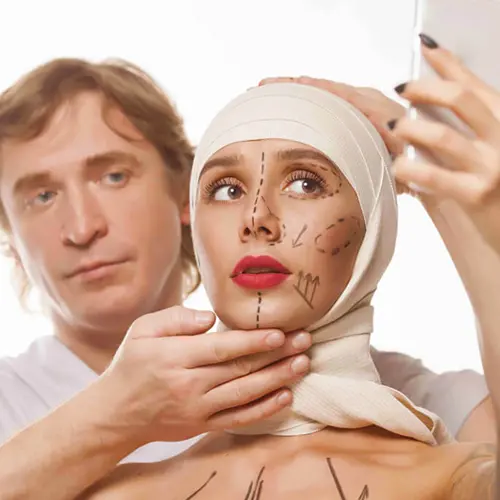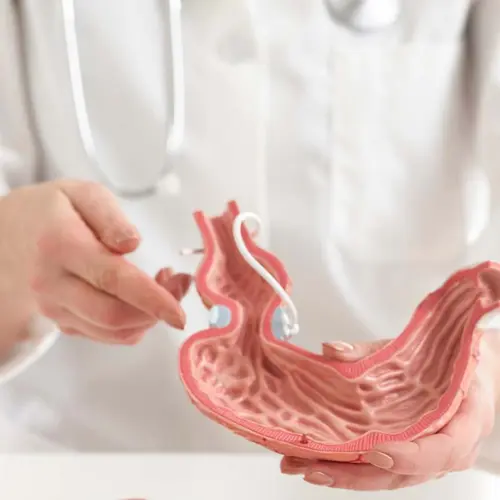Table of Contents
Some people may need eyebrow hair transplant rather than standard procedures. Eyebrow hair transplant operations involve taking hair follicles from a donor area, usually the back of the head, and implanting them into the eyebrow area to restore or enhance eyebrow density.
After the procedure, patients may experience mild discomfort and swelling, but these side effects usually subside within a few days. It is important to choose a qualified and experienced surgeon and to have realistic expectations about the outcome of the procedure.
If you want to get an eyebrow hair transplant in Turkey but need some details about the procedure and eyebrow transplant cost, you may check out our article for more!
Eyebrow Hair Transplant: Understanding the Procedure
Eyebrow transplant surgery is a cosmetic procedure that involves transplanting hair follicles from other parts of the body onto the eyebrows to enhance their appearance. This procedure is suitable for people who have naturally sparse or thin eyebrows or have lost their eyebrow hair due to injury, overplucking, or medical conditions such as alopecia.
Here's how the procedure works:
- Consultation: Before the procedure, the patient will have a consultation with the surgeon to discuss their expectations and assess their suitability for the procedure. The surgeon will examine the patient's eyebrows and the donor area from where the hair follicles will be extracted.
- Anesthesia: Local anesthesia will be administered to the patient to numb the donor and recipient areas.
- Donor hair extraction: Hair follicles will be extracted from the donor area, typically from the back of the scalp or behind the ears. The surgeon may use either the Follicular Unit Extraction (FUE) or Follicular Unit Transplantation (FUT) method for the extraction.
- Recipient site preparation: The surgeon will prepare the recipient site on the eyebrows by creating tiny incisions or slits.
- Hair transplantation: The extracted hair follicles will be transplanted into the recipient site using a specialized needle or blade. The surgeon will carefully place each hair follicle in the correct direction and angle to ensure a natural-looking result.
It is important to note that eyebrow hair transplant is a delicate procedure that requires a skilled and experienced surgeon. The success of the procedure depends on several factors, including the patient's skin type, hair quality, and the surgeon's technique. Patients should choose a reputable and qualified surgeon to ensure the best possible results.
Who Can Benefit from Eyebrow Hair Transplant Surgery?
Eyebrow transplant surgery can benefit anyone who has thin or sparse eyebrows, or who has lost their eyebrow hair due to injury, over-plucking, or medical conditions such as alopecia. Here are some specific groups of people who can benefit from this procedure:
People with naturally thin or sparse eyebrows
Some people are born with naturally thin or sparse eyebrows. This can make it difficult to shape and define the eyebrows or create a desired look. Eyebrow transplant surgery can help to increase the density and fullness of the eyebrows, creating a more defined and aesthetically pleasing look.
People who have over-plucked their eyebrows
Overplucking the eyebrows can cause the hair to become thinner or even stop growing altogether. Eyebrow hair transplant can help to restore hair growth and improve the appearance of the eyebrows.
People who have lost eyebrow hair due to injury
Injuries to the eyebrow area, such as burns or scarring, can cause hair loss. Eyebrow hair transplant surgery can help to restore hair growth and improve the appearance of the eyebrows.
Overall, anyone who is unhappy with the appearance of their eyebrows and wishes to improve their aesthetic appearance can benefit from eyebrow transplant surgery. However, it is important to consult a qualified and experienced surgeon to determine if this procedure is right for you.
FUE vs. FUT: Which Hair Transplant Technique is Best for Eyebrows?
Follicular Unit Extraction (FUE) and Follicular Unit Transplantation (FUT) techniques can be used for eyebrow hair transplant. However, FUE is generally considered to be the preferred technique for eyebrow hair transplants for the following reasons: minimal scarring, precision placement, better survival rate, and no linear scar.
Overall, FUE is the preferred technique for eyebrow transplant surgery however, it is important to consult with a qualified and experienced surgeon to determine which technique is best suited for your specific needs and goals.
Eyebrow Hair Transplant: Designing the Perfect Brow
Designing the perfect brow for an eyebrow hair transplant involves creating a natural-looking brow that complements the patient's facial features and enhances their overall appearance. Here are the key steps involved in designing the perfect brow for an eyebrow hair transplant:
- Consultation: The surgeon will first meet with the patient to discuss their goals and preferences for the brow design.
- Mapping out the brow shape: Once the surgeon has a clear understanding of the patient's goals and preferences, they will use a cosmetic pencil to draw the desired brow shape directly onto the patient's skin.
- Hairline placement: The surgeon will carefully place each hair follicle in the correct position and direction to create a natural-looking hairline.
- Density: The surgeon will ensure the hair follicles are placed at the correct density to achieve a natural-looking result.
- Angles and Direction: The surgeon will ensure the hair follicles are placed at the correct angle and direction to create a natural-looking brow.
- Follow-Up: After the procedure, the patient will have several follow-up appointments with the surgeon to ensure that the hair is growing correctly and to make any necessary adjustments to the brow design.
Overall, designing the perfect brow for an eyebrow hair transplant requires careful consideration of the patient's facial features and preferences, as well as a skilled and experienced surgeon who can create a natural-looking result.
How Many Hair Grafts Are Needed for Eyebrow Transplant Surgery?
The number of hair grafts needed for an eyebrow transplant surgery varies depending on individual patient needs and goals, as well as the surgeon's skill and experience. Generally, the number of hair grafts required is lower for eyebrow transplant surgery compared to scalp hair transplant surgery, with an average range of 200 to 400 hair grafts per eyebrow.
The exact number of hair grafts needed can be influenced by factors such as the thickness and density of the patient's existing eyebrow hair, the size and shape of the eyebrow area, and the patient's desired outcome.
Recovery After Eyebrow Hair Transplant Surgery: What to Expect
After eyebrow hair transplant surgery, patients can expect some mild discomfort, swelling, and redness in the eyebrow area. The surgeon will provide pain medication and anti-inflammatory medication to help manage these symptoms. Patients should avoid touching or rubbing the eyebrow area for the first few days after surgery to prevent dislodging the transplanted hair follicles. They should also avoid any strenuous activities or exercise for the first week after surgery.
Patients may be advised to sleep with their heads elevated to help reduce swelling. The transplanted hair follicles will initially shed within the first few weeks after surgery, but will then gradually start to regrow over the next few months.
Patients should follow the surgeon's post-operative instructions carefully to ensure optimal healing and hair growth. Overall, recovery after an eyebrow hair transplant typically takes about 7 to 10 days, with full recovery and final results visible within several months.
Risks and Complications of Eyebrow Hair Transplant Surgery
As with any surgical procedure, eyebrow hair transplant comes with potential risks and complications. It's important for patients to be aware of these risks before undergoing the procedure. Here are some potential risks and complications of eyebrow hair transplant surgery: infection, bleeding, swelling, scarring, etc.
Overall, the risks and complications of eyebrow hair transplant surgery are relatively low when performed by a qualified and experienced surgeon. Patients should discuss any concerns or questions with their surgeon before undergoing the procedure.
Conclusion: Achieving Beautiful, Natural-Looking Brows with Hair Transplant Surgery
Eyebrows are an essential feature of the face, framing the eyes and enhancing facial symmetry and beauty. For those with thinning or sparse eyebrows, hair transplant surgery can be an effective solution to achieve fuller, more natural-looking brows. With advances in hair transplant techniques, such as FUE, and the availability of donor's hair from various areas of the body, eyebrow hair transplant surgery has become a popular and safe procedure in many countries like Turkey.
If you are considering eyebrow hair transplant surgery, it's important to choose a qualified and experienced surgeon who can provide detailed consultation and personalize the treatment plan to your individual needs and goals. By doing so, you may get professional services and a reasonable eyebrow transplant cost.
Sources
https://www.healthline.com/health/eyebrow-transplant
https://my.clevelandclinic.org/health/treatments/24236-eyebrow-transplant
https://www.hshairclinic.co.uk/hair-loss-treatment/eyebrows-reconstruction
https://academicesthetic.com/en/eyebrow-transplant




















